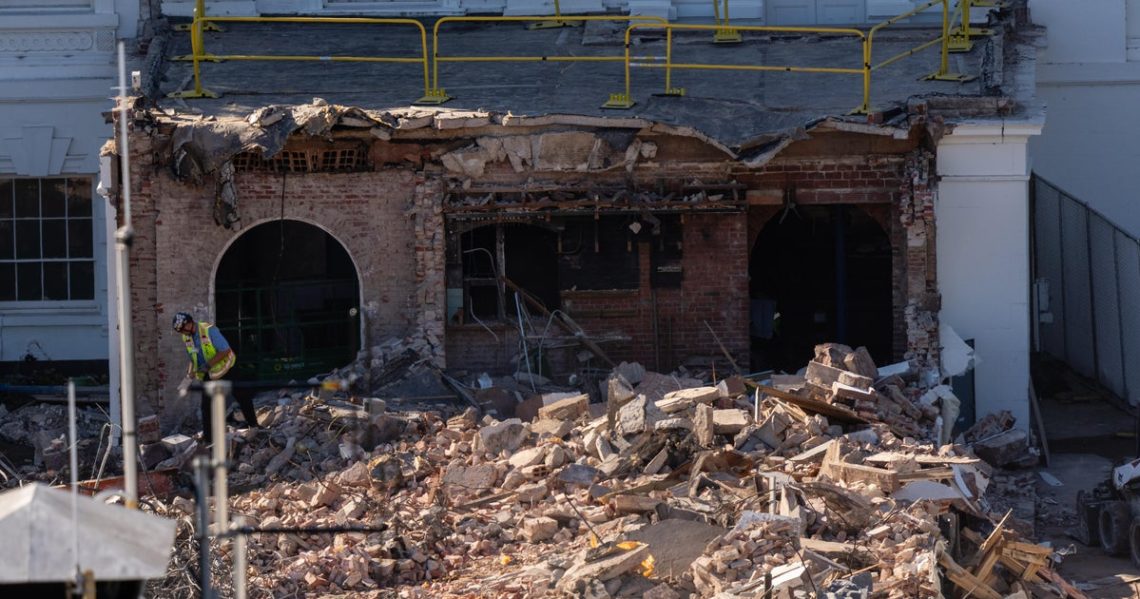A red and gray scrap hauler pulled out of the White House gates Friday morning, filled with remnants of the felled East Wing. Mangled rebar sprouted above the truck bed’s rim.
The truck trundled through the streets of Washington, D.C., down Pennsylvania Avenue, past an exit for Nationals Park and then north along the Anacostia River. Uneven pavement jostled free bits of White House rubble in its wake.
This week, demolition crews finished razing the East Wing and corridor that connected it to the White House residence. An upgraded walkway and 90,000-square foot ballroom will eventually take their place.
Construction began last month with heavy equipment cycling in and out of the White House’s east and south grounds.
For decades, the East Wing housed White House offices, workspace for First Ladies and served as a formal entrance for White House guests attending State Dinners or Christmas parties.
It was built in 1902, during the Theodore Roosevelt administration and completed in the 1940s.
Jacqueline Kennedy gave CBS News a tour of the White House complex in 1962. “I think this house will always grow and should,” Kennedy told CBS News correspondent Charles Collingwood. She described making changes to the furnishings as a slow process that required expert input and advisory board approvals – to preserve history.
President Trump’s privately funded construction project appears to be sailing ahead with less scrutiny.
The White House said historical components of the East Wing — like former First Lady Rosalynn Carter’s original office — have been saved and are likely to get a new home.
But Kennedy’s garden was removed amid the demolition, sources said.
Some dirt from the grounds has been taken to Hains Point parkland that sits on the Potomac River, just across from Ronald Reagan National Airport. The White House said some of construction debris, like wood and plants, may be sent to nurseries, through the National Park Service.
The red and gray truck carrying bits of the East Wing crossed from D.C. into Maryland and exited the highway. It entered Smith Industries, a vast scrap yard that sits next to railroad tracks.
Trucks carrying discarded siding, crushed cars and rusted appliances buzzed around the lot. Hard-hatted workers on forklifts zigzagged among the trucks.
Hydraulic claws hoisted heaps of twisted refuse into one machine. Another ran at full whir, spitting out bite-sized pieces that could be sold and eventually recycled.
The truck pulled onto the scale, headed toward the debris field and disappeared from view.
About 40 minutes later, after dropping off its load and a bit of history, the truck drove away from the yard.
Emma Nicholson and
contributed to this report.
The post Where is debris from the White House East Wing demolition being taken? appeared first on CBS News.




